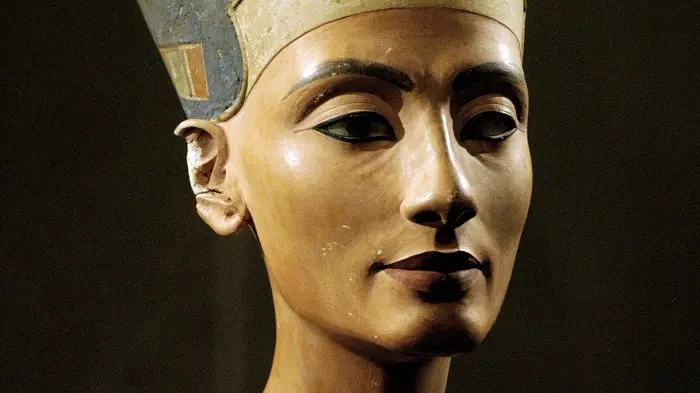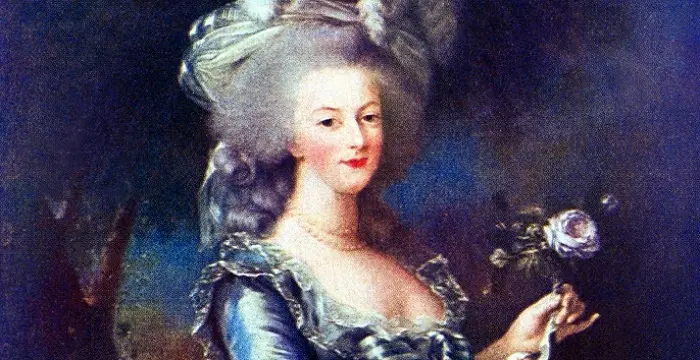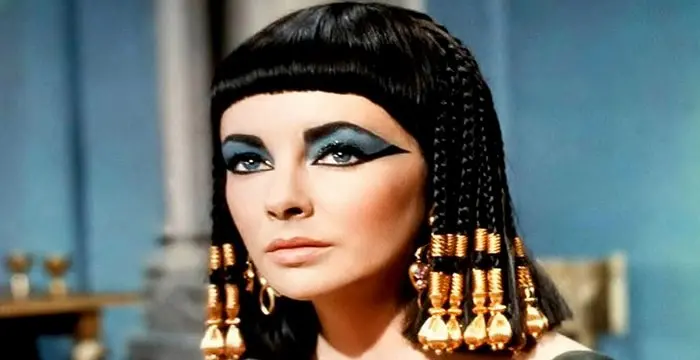
Hatshepsut - Pharaoh, Timeline and Personal Life
Hatshepsut's Personal Details
Hatshepsut is the first female Pharaoh belonging to Egypt to rule for the longest period
| Information | Detail |
|---|---|
| Birthday | 1508 BC |
| Nationality | Egyptian |
| Famous | Historical Personalities, Empresses & Queens, Leaders, Empresses, Pharaoh, Queens |
| Spouses | Thutmose II |
| Siblings | Nefrubity, Thutmose II |
| Known as | ฟาโรห์หญิงฮัตเชปซุต, 哈特谢普苏特 |
| Childrens | Neferure |
| Birth Place | Egypt |
| Gender | Female |
| Father | Thutmose I |
| Mother | Ahmose |
| Born in | Egypt |
| Famous as | Pharaoh |
| Died at Age | 50 |
// Famous Queens
Jetsun Pema
Jetsun Pema is the Queen consort of Bhutan. Check out this biography to know about her childhood, family life, achievements and fun facts about her life.
Princess Alice of Battenberg
Princess Andrew of Greece and Denmark, also known as Princess Victoria Alice Elizabeth Julia Marie of Battenberg, was the mother of Prince Philip, Duke of Edinburgh and mother-in-law of Queen Elizabeth II. This biography profiles her childhood, famil
Marie Antoinette
Marie Antoinette was the Queen of France and Navarre from 1774 to 1792. who played a major role in provoking the French Revolution. This biography of Marie Antoinette provides detailed information about her childhood and life
Hatshepsut's photo
Who is Hatshepsut?
Hatshepsut is one of the ancient rulers of Egypt and holds the reputation of being the first female Pharaoh of the nation. However, she tried keeping the kingdom's tradition alive by sporting the look of a man, thus making her countrymen feel that the kingdom is still being governed by a male. Having ruled for a little more than twenty years, she introduced a lot of significant changes during her administration which paved the way for great economic development. One such important move was the improvement of connectivity amongst different places, which led to an increase in trade. Hatshepsut is also known for having initiated the construction activities of many statues and monuments, which led to the creation of phenomenal pieces of architecture over the years. The pharaoh publicized her administration by getting her images inscribed on the walls of buildings, which was quite unusual for her time. Although few sources claim that her foreign policy believed in maintaining cordial relations with nations, a few others believed that she carried out military operations to invade neighboring kingdoms like Syria. The reign of this female Pharaoh is one of the best examples to prove that a woman's leadership abilities can sometimes even surpass a male. To know more about her life and works read on
// Famous Empresses
Jetsun Pema
Jetsun Pema is the Queen consort of Bhutan. Check out this biography to know about her childhood, family life, achievements and fun facts about her life.
Princess Alice of Battenberg
Princess Andrew of Greece and Denmark, also known as Princess Victoria Alice Elizabeth Julia Marie of Battenberg, was the mother of Prince Philip, Duke of Edinburgh and mother-in-law of Queen Elizabeth II. This biography profiles her childhood, famil
Marie Antoinette
Marie Antoinette was the Queen of France and Navarre from 1774 to 1792. who played a major role in provoking the French Revolution. This biography of Marie Antoinette provides detailed information about her childhood and life
Childhood & Early Life
Hatshepsut was born to an Egyptian Pharaoh named Thutmose I and Ahmose, who was one of the wives of this ruler.
When the princess was barely 12 years old, her father passed away. Circumstances forced her to enter the wedlock with Thutmose II, who was another child of his father from his relationship with a second wife.
The intention behind the wedding was to prevent the younger generation from involving themselves in a courtship outside the royal family. Her marriage to her half-brother helped Hatshepsut rise to the position of the queen.
Thutmose II passed away after ruling for 15 long years, when the Queen was hardly 30 years old. The couple was devoid of a male heir to the throne and the question of the next successor plagued the royal family. Although Thutmose II had a male child with a mistress named Isis, he was only an infant.
Accession & Reign
The queen solved the problem by deciding to step into her husband’s shoes as the ruler, until the infant Thutmose III attains a considerable age. However, it is believed that her nephew Thutmose III remained a co-ruler for the rest of his life and never gained complete control over the thrown.
After succeeding her husband Thutmose I, Hatshepsut’s biggest responsibility was to ensure that her kingdom’s economy flourishes. One of the first few milestones she achieved was improving the trade network across Egypt, which was not well-developed during the reigns of her predecessors.
Paths were constructed to ensure better connectivity between neighboring towns and cities, helping in bettering the Egyptian economy.
It is also believed that during the early years of her rule, Hatshepsut tried to invade Syria and ancient African kingdoms like Nubia using her military forces and even succeeded in her task.
Another work of great significance which the female Pharaoh undertook was ensuring better infrastructure in her kingdom, which mainly included construction of buildings. Hundreds of dwellings were constructed throughout Egypt during this female Pharaoh’s tenure.
The ruler had sought the help of a renowned architect called Ineni to create phenomenal works of architecture. One such masterpiece, of her tenure, was the restoration of an ancient historical site named ‘Precinct of Mut’, dedicated to the Egyptian goddess named Mut. Her highness had even got two Obelisk structures of her installed at this temple.
The leader’s religious interest inspired her to focus on the construction of the temple named ‘Djeser-djeseru’, which also served later as the Pharaoh’s mortuary. The temple was known for featuring a magnificent colonnaded structure and is considered a classic piece of architecture even today.
The Pharaoh is also said to have constructed many monuments in the ancient temple site of ‘Karnak’, located towards the south of the present day Egyptian capital Cairo.
Another common belief associated with Hatshepsut is that she promoted the achievements of her administration by inscribing drawings on the various monuments that were constructed during her period.
Personal Life & Legacy
It is believed that the female Pharaoh had passed away during the year 1458 BC, and was cremated at a site called ‘KV20’, which was also the same place where her father Thutmose I was buried. The female Pharaoh, who ruled for more than twenty years, was succeeded by her nephew Thutmose III.
It is said that Hatshepsut had started constructing her burial site long before her death, even when her husband was alive.
When Thutmose III, her successor, reached the end of his tenure, many attempts were made by the ruler’s son to eliminate all the historical fats and records associated with Hatshepsut. The activities included erasing information related to the female Pharaoh from the walls of the monuments of her time.
In the year 2006, researchers had found archaeological remains at the temple complex of Karnak, which are believed to be that of this female Pharaoh and her successor Thutmose III.
Many statues were constructed during the Pharaoh’s tenure, which were mostly created by the architect Ineni. The ‘New York Metropolitan Museum of Art’ houses many of these works even today.
Trivia
Since the day she succeeded her husband, the Pharaoh was believed to have continued sporting a fake beard and being clad in a kilt till the end of her tenure, creating an impression that the ruler is not a woman.
// Famous Pharaoh
Tutankhamun
Tutankhamun was an Egyptian pharaoh who became well-known after the discovery of his intact tomb in Egypt's Valley of the Kings in 1922. This biography provides detailed information about his childhood, life, achievements, works & timeline
Cleopatra
Cleopatra was the last Pharaoh of Egypt. She was a powerful leader and reportedly the most beautiful woman of that time. Read this biography to know more about her childhood, life & timeline.
Hatshepsut biography timelines
- // 1508 BC To 1458 BCHatshepsut was born to an Egyptian Pharaoh named Thutmose I and Ahmose, who was one of the wives of this ruler.
- // 1458It is believed that the female Pharaoh had passed away during the year 1458 BC, and was cremated at a site called ‘KV20’, which was also the same place where her father Thutmose I was buried. The female Pharaoh, who ruled for more than twenty years, was succeeded by her nephew Thutmose III.
- // 2006In the year 2006, researchers had found archaeological remains at the temple complex of Karnak, which are believed to be that of this female Pharaoh and her successor Thutmose III.
// Famous Historical Personalities
Sundiata Keita
Sundiata Keita was the founder of the Mali Empire in West Africa. This biography profiles his childhood, early life, struggles, founding of empire, rule, administration, achievements and also gives some fun facts.
Ashoka
Ashoka was the third emperor of the Mauryan Dynasty and ruled almost the entire Indian subcontinent. This biography profiles his childhood, life, reign, achievements and timeline
Jetsun Pema
Jetsun Pema is the Queen consort of Bhutan. Check out this biography to know about her childhood, family life, achievements and fun facts about her life.
Murad IV
Murad IV was one of the mighty Sultans in the history of the Ottoman Empire. This biography profiles his childhood, family, accession, rule, administration and timeline.
Xerxes I
Xerxes I (Xerxes the Great) was the fourth and the most famous king of the Archaemenid dynasty of Persia. This biography profiles his childhood, family, personal life, life history, achievements, campaigns, administration, death and other facts.
Sargon of Akkad
Sargon of Akkad, also called ‘Sargon the Great’, ‘Sarru-Kan’ and ‘Shar-Gani-Sharri’, was the founder and first king of the Akkadian Empire. This biography profiles his childhood, life, rule, administration, timeline, and gives some fun facts.
Hatshepsut's FAQ
When was Hatshepsut died?
Hatshepsut was died at 2020-04-14
Which age was Hatshepsut died?
Hatshepsut was died at age 50
Where is Hatshepsut's birth place?
Hatshepsut was born in Egypt
What is Hatshepsut nationalities?
Hatshepsut's nationalities is Egyptian
Who is Hatshepsut spouses?
Hatshepsut's spouses is Thutmose II
Who is Hatshepsut siblings?
Hatshepsut's siblings is Nefrubity, Thutmose II
Who is Hatshepsut childrens?
Hatshepsut's childrens is Neferure
Who is Hatshepsut's father?
Hatshepsut's father is Thutmose I
Who is Hatshepsut's mother?
Hatshepsut's mother is Ahmose
How famous is Hatshepsut?
Hatshepsut is famouse as Pharaoh










